|
|
|
A PORTRAIT OF DR. PAUL SERENO – THE ‘SUCHOMIMUS STAR’
STEVE BRUSATTE - See Note
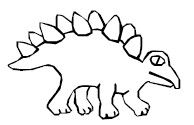
Barnum Brown, Roy Chapman Andrews, O.C. Marsh, E.D. Cope, John Ostrom, John Horner, and Edwin Colbert, all of these names come to mind when thinking of American paleontology. Now it is time to add another name to that tradition-rich list: Dr Paul C. Sereno.
Paul Sereno’s life in paleontology has been confusing and interesting. Born in Naperville, Illinois, Sereno was one of six children in an academically rich family. But Paul was the rebel as a youth. He slacked off with his studies so much that he almost failed the sixth grade. But, as with many paleontologists, he bounced back and graduated from the Naper grade school system.
Sereno went into high school with a love for art, a love that would serve him well in the future and provide a base for his experiences in paleontology. After graduating, he enrolled in Northern Illinois University without a career plan. Then, a dramatic event occurred in his life. In 1986 he visited his brother Martin, who was studying paleontology at Columbia University. Through his brother, now a doctor, but not a paleontologist, Sereno arranged a behind-the-scenes tour of the American Museum of Natural History in New York City. After witnessing one of the richest dinosaur collections in the world, he knew he wanted to become a paleontologist.
‘I never recovered from that visit,’ Sereno said.
With paleontology, Sereno realized that he could combine some of his favourite subjects: art, travel, science, adventure, biology and geology.
After he graduated from NIU, Sereno enrolled in Columbia University’s paleontology graduate program. He received his Ph.D., and in 1988 led his first paleontological expedition. A young and interested Sereno trekked to Argentina that year to try to search for the remains of the oldest dinosaurs. In the 1950s, the remains of the earliest-known dinosaurs were excavated in the foothills of the Andes, near an area called Ischigualasto. Sereno believed that more dinosaur fossils could be found, and that these fossils could document the transition to a world ruled by the dinosaurs.
During the third week of the expedition, Sereno made an amazing find. While exploring an outcrop with his crew (which contained six Americans and several native Argentines), he noticed what appeared to be a neck vertebrate eroding away. He followed the vertebrate with his eyes, and discovered that it led, literally one vertebrate at a time, to the skull of a primitive dinosaur. He later named this species ‘Herrerasaurus’, in honor of Victorino Herrera, who originally showed the land to paleontologists in the 1950s. Despite the earlier traces of this same organism, this find was more important, for it contained the skull and forearms. In the first dig that he led, Sereno discovered one of the most important paleontological specimens of our generation.
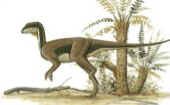
In 1991 Sereno led another team to Argentina. This time his crew discovered an astounding new specimen – one of an even earlier dinosaur. He named this specimen ‘Eoraptor’ (dawn raptor), which was closely related to Herrerasaurus. The three-foot-long dinosaur was determined to be about 228 million years old, based on the age of an adjacent ash bed. The fossil, most importantly, gave new insights into the radiation of the dinosaurs. Sereno identified Eoraptor and its cousin as genuine theropods, because of certain specializations. This meant that they were not, indeed, primitive, meaning that the dinosaurs radiated earlier than previously thought.
After his Argentina expeditions, Sereno shifted to Africa, to rocks in the Sahara Desert that formed towards the end of the reign of the terrible lizards (a time when the continents were breaking apart). In 1993 Sereno led an expedition to Morocco, which led to the discovery of the new predator Afrovenator. The fossil, discovered in 130-million-year-old rocks, was 27 feet long. Meaning ‘hunter from Abaka, Africa’, this dinosaur had a three-fingered hand, a sickle claw, and two-inch-long blade-like teeth. Today this find is recognized as the most complete Cretaceous carnivore ever discovered in Africa.
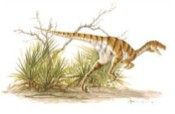
Before the discovery of this amazing specimen, many believed that the supercontinent of Pangaea had split in two before the time of Afrovenator. But, Sereno points out, Afrovenator’s closest relatives are the Allosaurus of North America. Afrovenator did not have any close relations in South America, which was joined with Africa after the continent split in two. This implies that Pangaea probably moved apart many millions of years later than paleontologists originally expected, which was 150 million years ago.
Later, in 1995, Sereno identified two new dinosaur species. Coming from 90-million-year-old rocks in Morocco, Sereno discovered Deltadromeus and Carcharodontosaurus. Deltadromeus agilis (agile delta-runner) was a 25-foot-long, fleet-footed predator. Gabrielle Lyon, a member of the crew, discovered the fossil. Sereno and his colleagues reported the find in the journal Science.
On that same expedition Sereno also discovered the first complete skull of Carcharodontosaurus saharicus (shark-toothed reptile from the Sahara). The predator was a 45-foot-long carnivore with a brain only half the size of Tyrannosaurus rex (despite the fact that it was five feet longer). The skull Sereno discovered, which is roughly the size of the skull of the Tyrannosaurid ‘Sue’, was 5 feet 4 inches and had long, serrated teeth. Many believe that it was the largest carnivore ever to walk the earth.
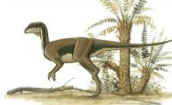
Despite the media attention, Sereno was not the first to describe bones of this terrifying beast. Ernst Stromer von Rerchenbach collected a few bones and teeth in Egypt earlier in the twentieth century. He donated the bones to a Munich museum, but they were destroyed by Royal Air Force bombing during World War Two. Even though the bones were destroyed, Sereno matched them up with the one he found in Morocco. By comparing the teeth from the skull he found to the teeth described by Rerchenbach, Sereno solved the mystery.
In 1997 Sereno returned to Africa, this time to the country Niger. He believed that there was a land bridge linking Africa and Europe for several millions of years after Pangaea broke up.
‘That land bridge prevented the evolution in isolation of a unique southern dinosaur fauna.’
All Sereno needed was proof, and this he found in the Tenere Desert in Niger in the fall of 1997. The expedition was rough and gruelling. Niger was in the midst of a civil war, and the crew was in constant danger of death. But Sereno pressed on. This paid off greatly, as crew member David Varricchio spotted a huge thumb claw eroding out of the ground.
‘It was lying on the surface of the desert completely exposed by wind and sand, and would have been visible like that for centuries to anyone who walked by,’ Sereno later said.
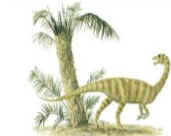
The noticeable and amazing claw led to the excavation of over 400 bones, which Sereno later took back to his lab and studied. He, along with ten others, described the find in the November 13, 1998 issue of the journal Science. In his paper, Sereno named the specimen ‘Suchomimus tenerensis’, or ‘crocodile mimic from the Tenere’.
Suchomimus was an amazing find, which provided the proof Sereno needed to prove his hypothesis. Suchomimus was closely related to the English Baryonyx, and not the American Spinosaurus. This link suggests that Spinosaurids crossed the wide Tethyan Seaway that separated the north and south.
Further more, Suchomimus represented just how diverse the dinosaurs could get. Its amazing skull is a cross between a dinosaur and a crocodile, Sereno explained.
‘It was a dinosaur trying hard to be a crocodile,’ he stated to the press. Its four-feet-long skull had a narrow, long snout with large teeth encased in a chin-like protection called a ‘rosette’. The jaws had more than a hundred teeth, which were used as hooks, probably used to catch fish, rather than blades, as seen in Tyrannosaurus rex.
Also unlike Tyrannosaurus. Suchomimus had powerful forearms that were used to grasp prey. It also had a sail on its back, possibly used as heat regulation or to attract mates.
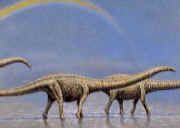
Because of its similarity to a crocodile, many paleontologists suggest a similar life. The two lived side by side in a lush area filled with numerous lakes and streams, which were crawling with large fish. Evolution gave it the tools to eat fish, explains theropod expert Thomas Holtz, of the University of Maryland. This enabled the dinosaurs to diversify, which helps explain why they were able to rule the land for over 140 million years.
‘It was the dominant predator of its time,’ Sereno explained. The dinosaur was 36 feet long and 12 feet tall at the hips. ‘It’s bigger than your average room,’ Sereno stated to a national radio program.
‘It was amazing,’ Sereno stated later. This one statement vividly describes one of, if not the, most important paleontological finds of the decade.
That was Paul Sereno’s last expedition, to date, and he is not planning another over the summer. Instead he is staying in Chicago and preparing a new sauropod that he discovered on the very same Niger expedition. ‘It gives an insight of Africa 130 million years ago,’ he explained during an interview.
By leading many expeditions, to Africa and Argentina, plus examining the cladistics of dinosaurs, Dr Paul C. Sereno has added to the current thinking on dinosaurs. Among his finds are the oldest dinosaurs, possibly the biggest carnivore, a fossil explaining the breakup of Pangaea, the crocodile-like Suchomimus, and now, a new sauropod. So, it is time to add his name to the tradition-rich list of American paleontologists.
(* Steve Brusatte [15] of Ottawa, Illinois, USA, is trying to become the first teenager to write a book on paleontology. He has interviewed such stars as John Horner, Pete Ward, Roger Smith, and Sereno. His book will focus on the contributions of modern paleontologists, including amateurs, collectors, and artists. For more information, or to make a publishing offer, contact Steve at: brusatte@theramp.net or visit his website at http://www.geocities.com/CapeCanaveral/Galaxy/8152) - RETURN TO TOP
